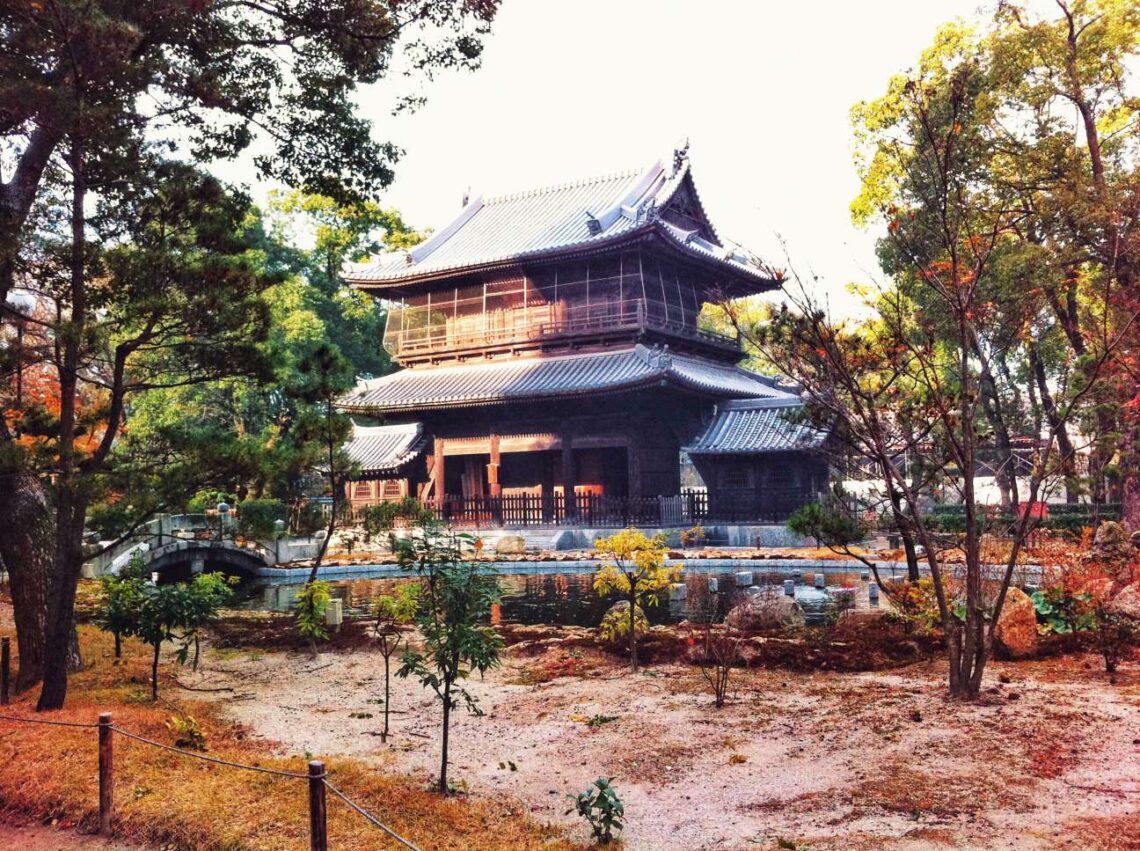
Shofukuji – A Complete Guide to Japan’s First Zen Temple
Would you believe if I tell you that the temple that pioneered one of Japan’s major religion is a back alley temple within a metropolitan? That’s right, the founding temple for Zen Buddhism in Japan is Shofukuji (聖福寺); one that is not in the ever-popular Kyoto (京都) but in the city of Fukuoka (福岡). As a matter of fact, this temple was founded in AD 1195; predating Kyoto’s oldest Zen temple, Kenninji (建仁寺) by 7 years. Having said that, let’s explore this little temple that founded Zen Buddhism in Japan.
Table of Contents
History of Shofukuji
Shofukuji (聖福寺) was first established in AD 1195 by a Buddhist priest known as Eisai (栄西). Eisai himself was a man of culture; a monk who went on an exchange to Mt Tiantai in China to learn about Zen Buddhism and eventually became the first Japanese monk to be certified as a Zen teacher. He also happened to be a big fan of tea leaves; bringing tea seeds back to Japan as souvenirs and even wrote a book of its cultivation.
Out of enthusiasm of Zen Buddhism, he also established the first two Zen temples in Japan; with Shofukuji being the first, and Kyoto’s Kenninji being the second. It is no surprise that the first temple was built around the Hakata area (博多) in Fukuoka given that the area serves a base port for trading with China and Korea even until this day. Additionally, the temple’s land itself was contributed by the shogun (将軍 or military dictator) at that time who was Minamoto-no-Yoritomo (源頼朝), who had just unified the country.
Despite being burnt down numerous times throughout the centuries due to civil wars, the current structures were eventually built during the 17th century Edo period. Because of its importance, it was eventually designated as a National Historical Site in 1969. Today, it serves as a testament for the inception of Zen Buddhism in Japan.
Exploring Shofukuji
Shofukuji is unique in a sense that it is located inside a peaceful district within a metropolis. The area itself is called the Hakata Old Town (博多旧市街/Hakata-Kyu-Shigai), located just right behind Taihaku-dori (大博通), one of the busiest road in the city. Filled with ancient town walls and temples such as Shofukuji and Tochoji (東長寺) while being shaded by the lush trees, the area is certainly a go-to spot especially for those seeking to have a quiet moment.
- Venture into the old streets of Hakata as you make your way towards the temple.
- Look out for these little attractions too prior as you enter the temple.
- Check out this magnificent traditional gate and the history behind it.
- Also, take a stroll along the peaceful garden of the temple.
- Afterwards, head towards the main Buddhist Sanctum of the temple.
- As you explore the beautiful complex, be sure to take your time to admire the surrounding gorgeous architectures.
- And if you are lucky, you may enjoy your visit together with the company of these cute stray cats.
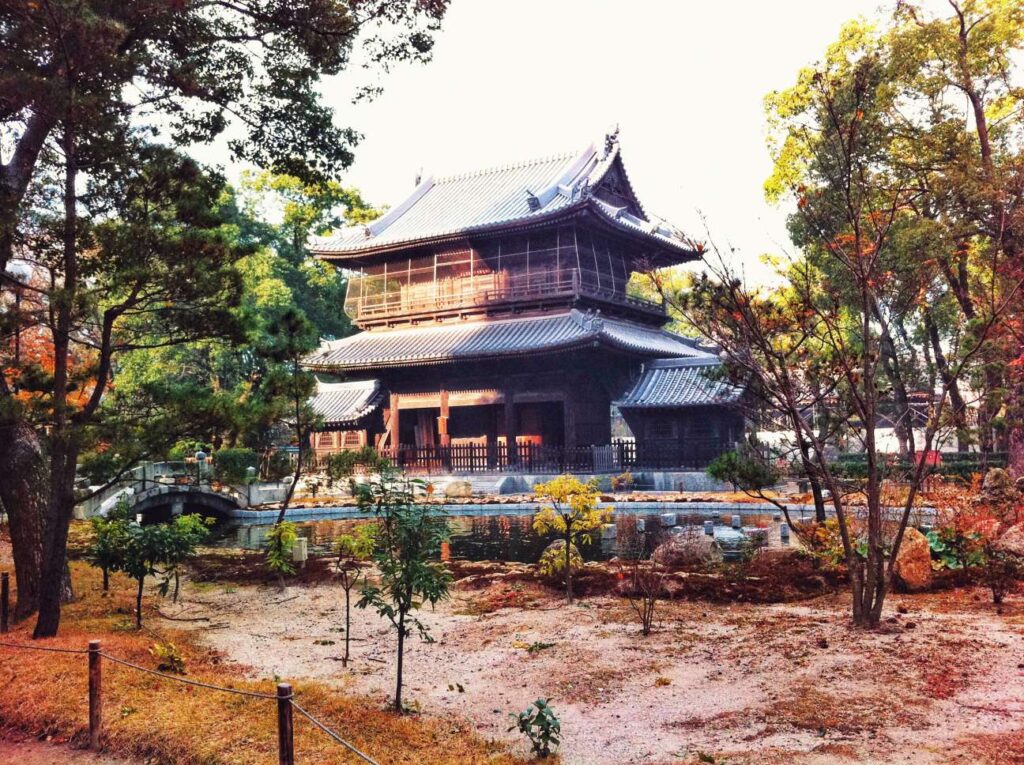
Checking Out the Streets of Old Town Hakata
Given how the temple is located within the Old Town section of Fukuoka, it is hard to miss the old city walls as you walk along the way. The streets here feature a wonderful combination of traditional Japanese walls and residential houses, along with the company of lush towering trees. These walls were built centuries ago; symbolising Fukuoka’s long history as a major port city. In fact, this whole area feels like an escape room from the bustling city next door.
It is undeniably surprising to witness the contrast between the lively bustling city vs the peaceful tranquil Old Town area; both which are just next door neighbours. The lack of crowds also presents plenty of opportunities to snap some pictures of the traditional and authentic side of Japan. Check out some of the below pictures which I have taken on that day itself.
Fukuoka has been a major port city for Japan since the 6th century. It was once a major connection point between Japan together with mainland China and Korea. Even one of the historical three unifiers, Toyotomi Hideyoshi (豊臣秀吉) acknowledged its importance as a port to connect with the mainland Asia. He then commenced a recovery plan for the entire town in AD 1587 after it was severely damaged from civil wars. This plan subsequently transformed the once small town into the metropolis it is today.
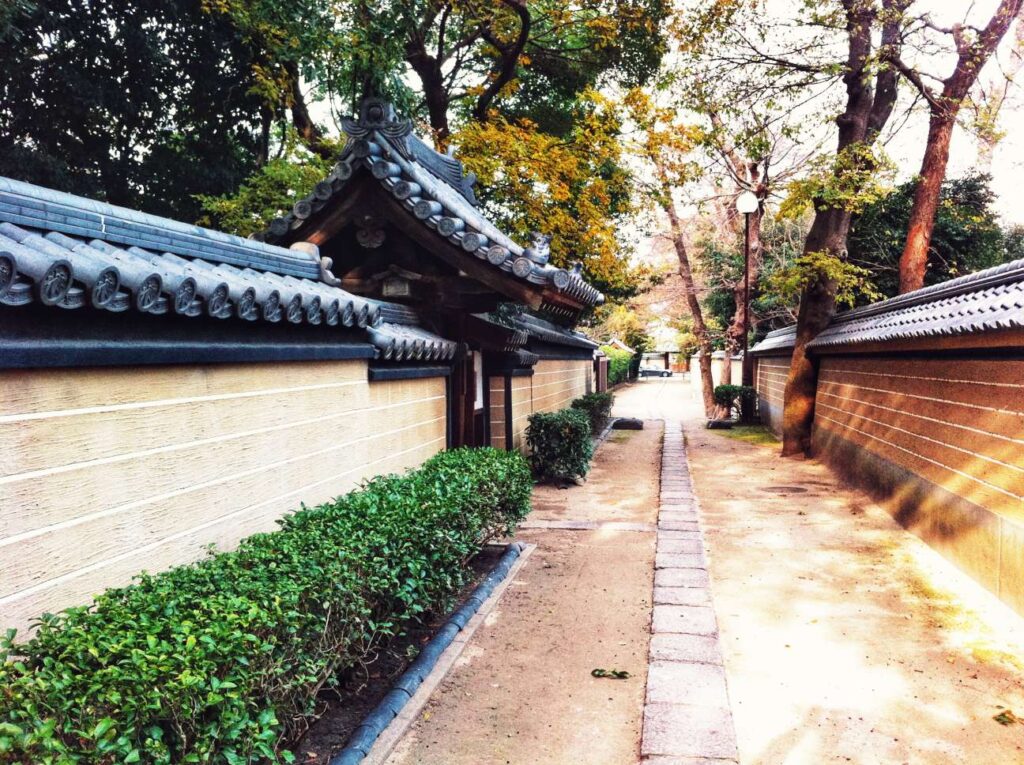
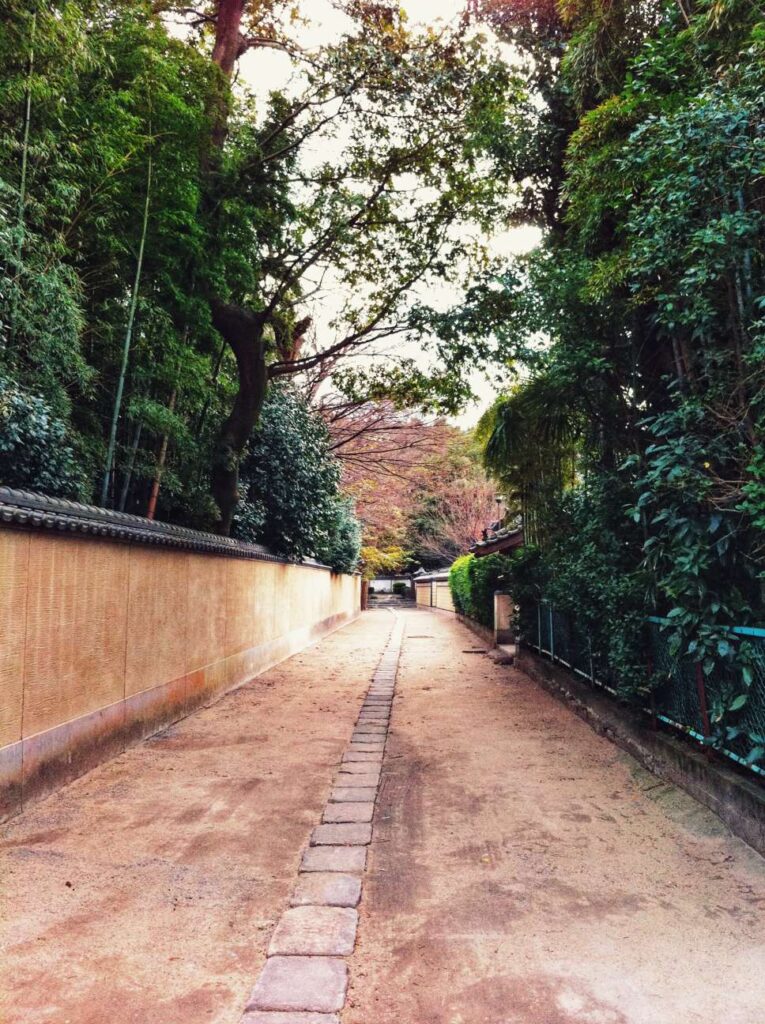
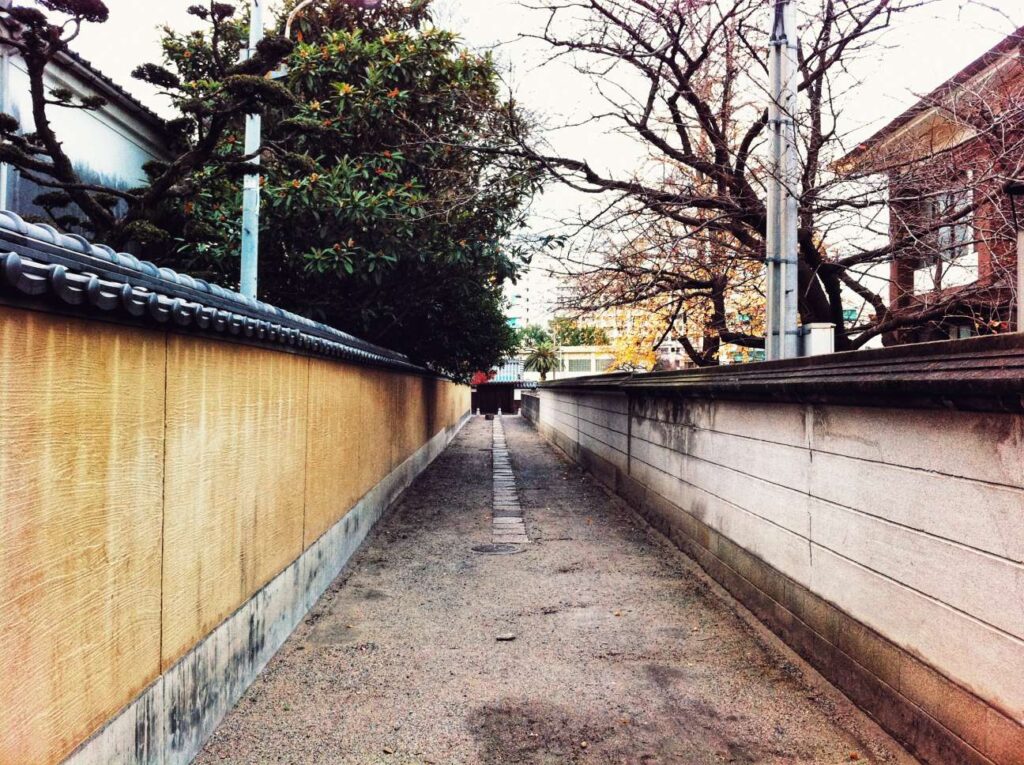
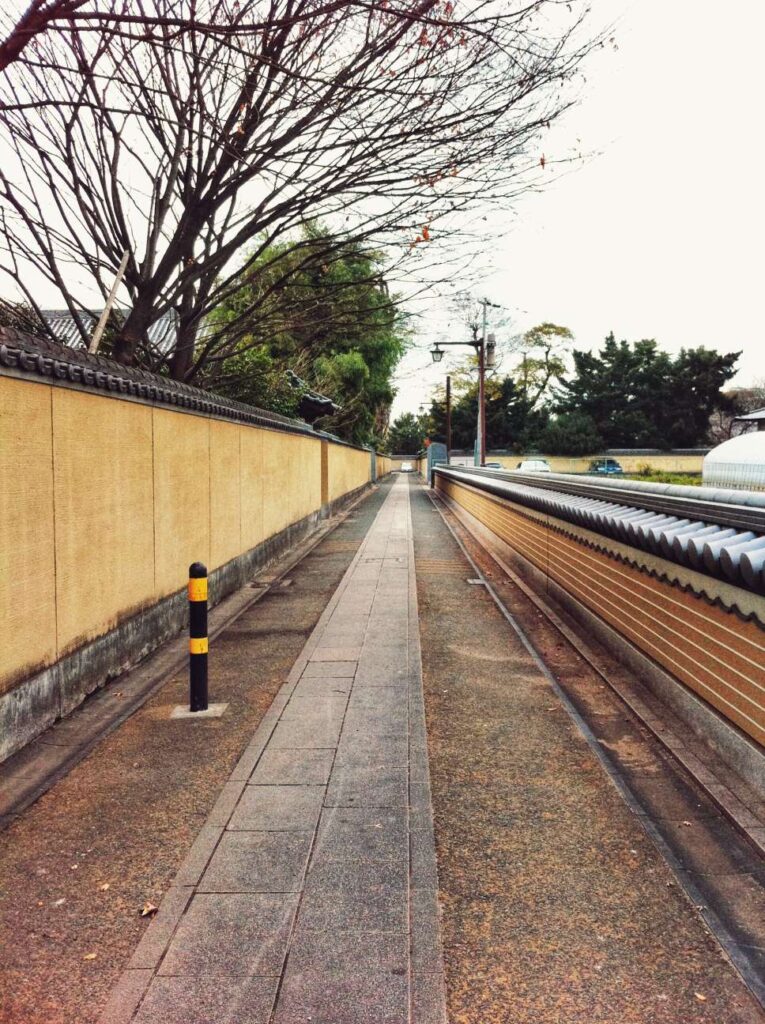
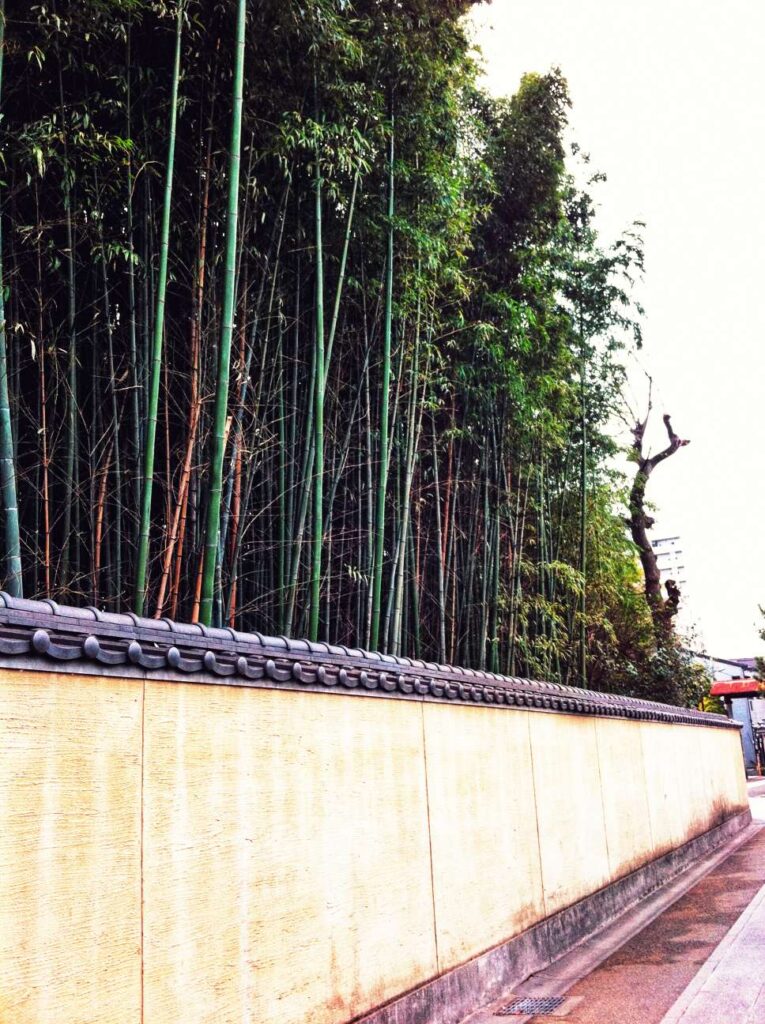
Lookout for These Attractions Before Entering Shofukuji
Afterwards, pay close attention to the chrysanthemum flower (菊花) emblem on this gate below. This gate is the Chokushi-mon (勅使門), a gate that is only open specifically for Imperial envoys when they pay a visit to temple. Chrysanthemum flowers are the official symbol of the Imperial household in Japan.
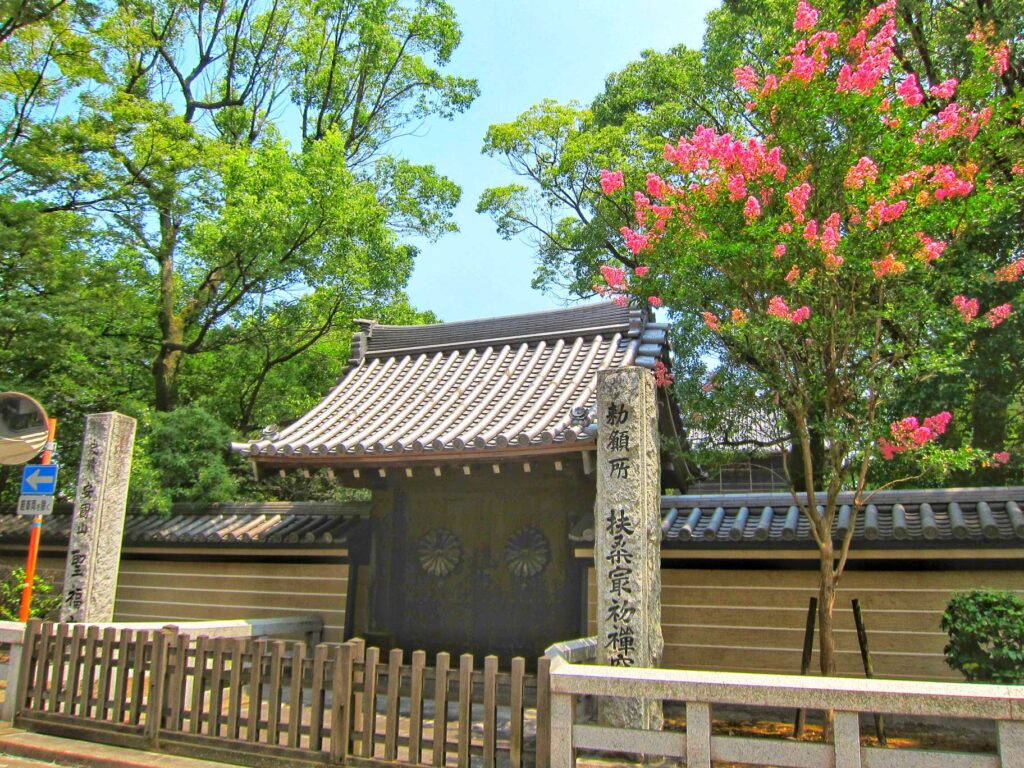
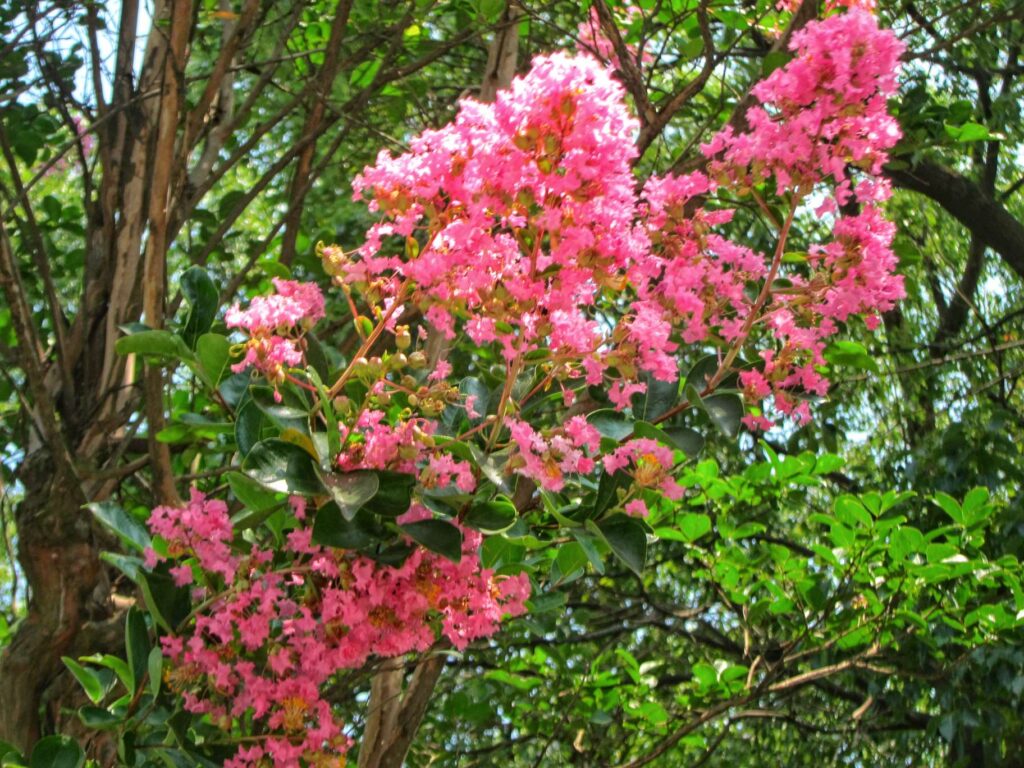
Afterwards, look out for the actual entrance gate that features a sign saying「安国山/Ankoku-zan」. This is the sango (山号) or the mountain name of Shofukuji. It is common to see temple’s having a mountain name in Japan; as mountains are revered as sacred places in Japan and also many temples in Japan are built inside mountains.
Because of the strong connection of mountains with religion, subsequently many temples also feature a sango as a prefix, followed by their actual name. For Shofukuji’s case, the full name of the temple is in fact Ankoku-zan Shofukuji (安国山聖福寺).
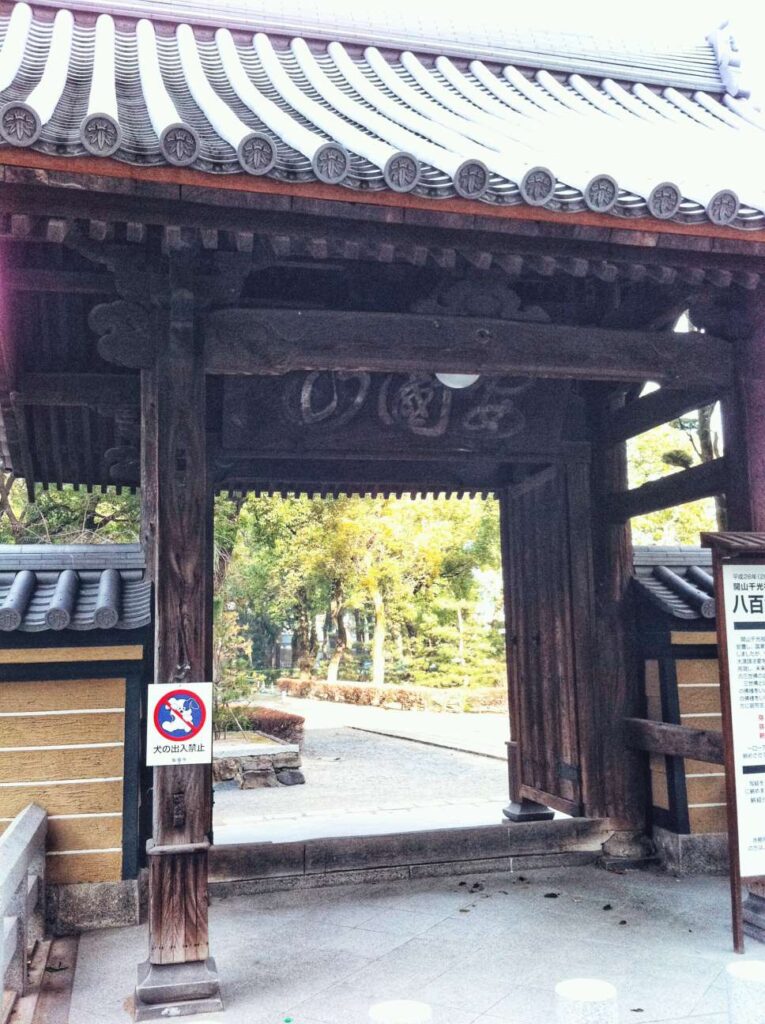
Upon reaching the entrance, look out also for these walls with the unusual patterns. These are the ‘Hakata-bei/博多塀’, a limited edition wall only to Fukuoka and there is a little story behind it. During the warlord Toyotomi Hideyoshi’s (豊臣秀吉) attempt to restore the city back in AD 1587, major debris had to be cleared immediately. The people of the old city immediately used these debris as a construction of the city walls; mixing both stones and roof tiles to create these mud walls. The patterns displayed on these walls are the surfaces of the debris used; which assimilate surprisingly well with the surrounding nature.
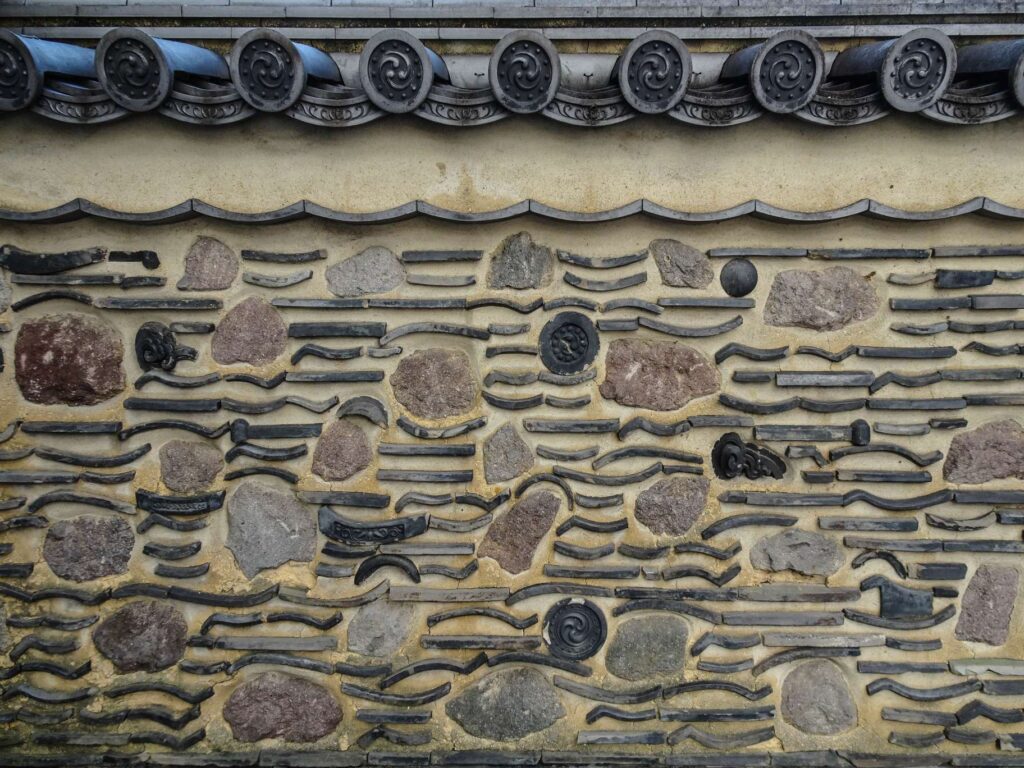
Checking Out Shofukuji's Iconic Gate
As we enter the peaceful complex, we will be greeted by a large imposing rustic gate. This impressive gate is the Sanmon gate (山門); the gate that stands in between the outer gate and the temple’s main hall. The original gate was burnt down in 1866, and was eventually rebuilt in 1911 by Iwasaki Shozaburo (岩崎莊三郎), the owner of a construction company.
While admiring the majestic gate, check out the little square framed tablet on top of the gate. The tablet here states the characters 「扶桑最初禅窟/Fusosaishozenkutsu」, written by Emperor Gotoba (後鳥羽上皇) who was a patron of arts and a huge swords geek too. As a matter of fact, this tablet was the only part of the gate that miraculously escaped the fire in 1866; simply because it fell down from the structure during the fire itself.

Sanmon (山門) gates often served as the middle gates in between the outer entrance and the main hall (仏殿 or butsuden). In fact, it is easy to identify a Zen Buddhism temple simply with the existence of the Sanmon. Furthermore, the size as well as the number of gates within the Sanmon indicates the rank of the temple. The larger the Sanmon and the more gates it has, the higher the rank of the temple is. Larger ones also contain a second level where Buddhist statues are housed and religious ceremonies being conducted occasionally.
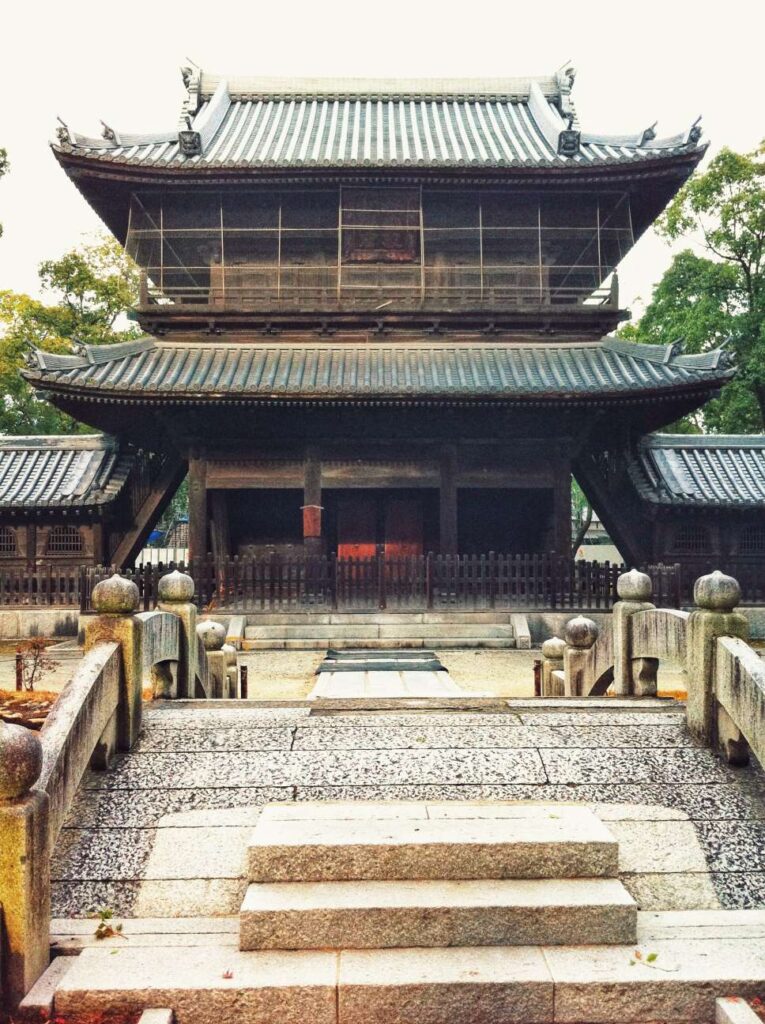
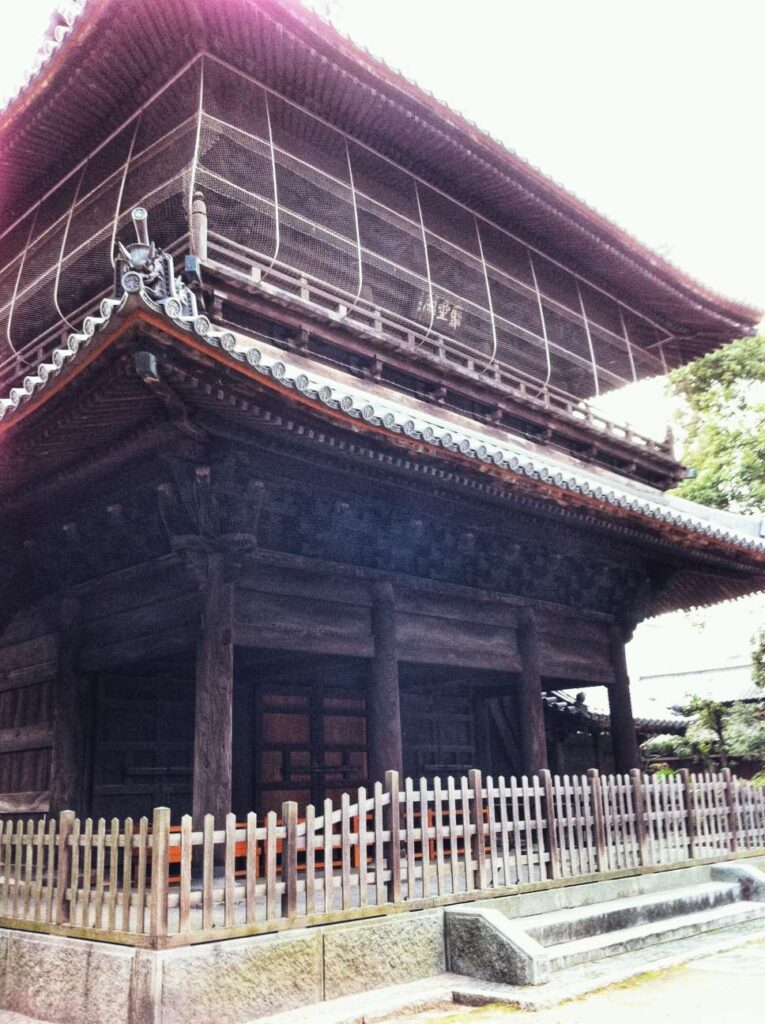
Take a Stroll Along The Beautiful Garden
As we explore the temple’s complex, take your time to stroll along the lovely Zen garden. In fact, when I was there both times, there were hardly any crowd, allowing me to have the entire complex for myself.
The small pond in front of the Sanmon gate is the Musen-ike (無染池 which literally means undyed pond). Unlike most other temple ponds in Japan which are squared shape; this particular pond is shaped like a gourd. This creates a rather elegant landscape for the garden and also earning its nickname as the Pond of the Gourd (瓢池/Hyoutan-ike).
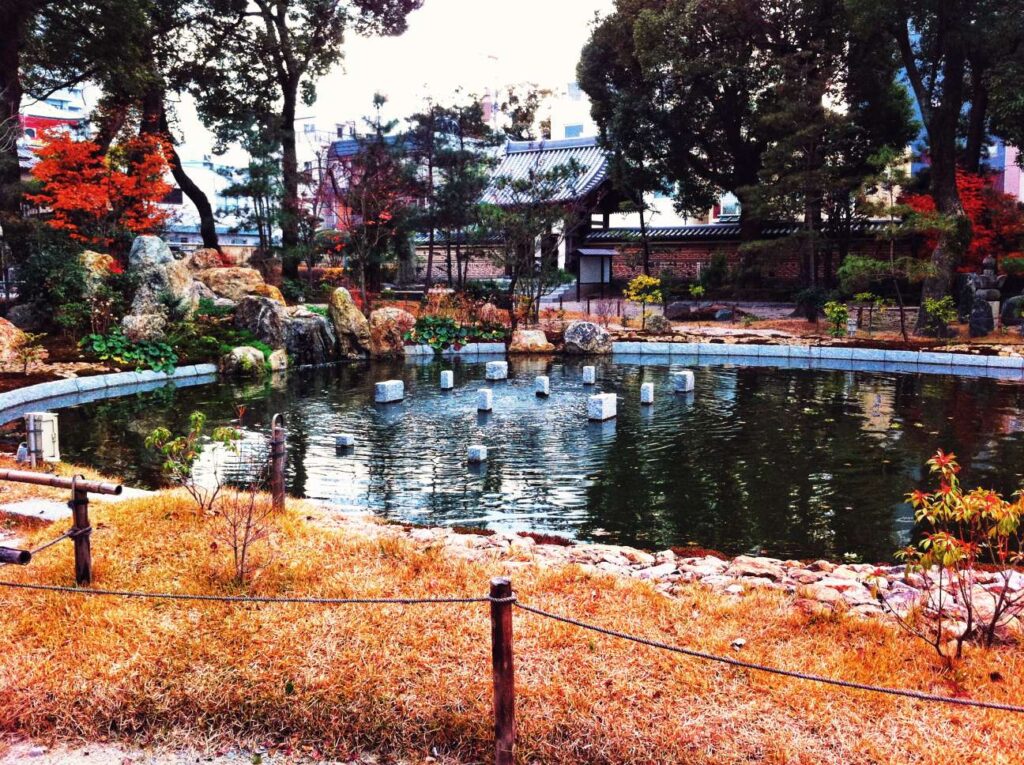
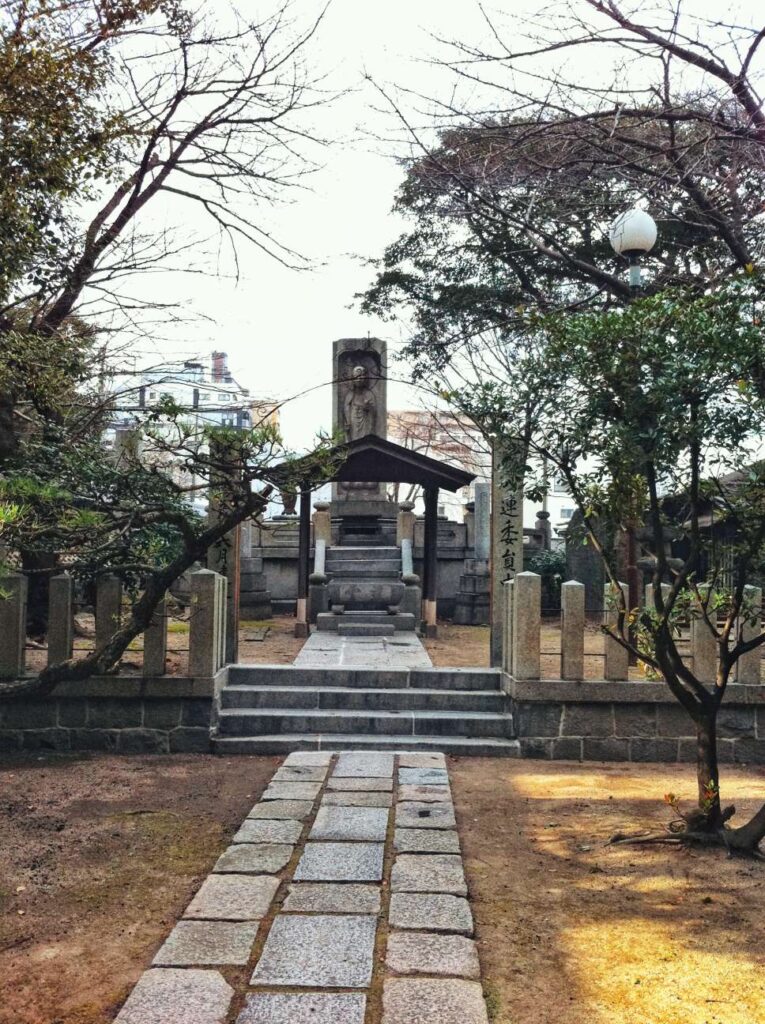
Also look out for the temple’s rustic and charming bell tower below. Built in AD 1589, this is called a shoro (鐘楼; pronounced shourou/shōrō) in Japanese and its tower-like design is known as the hakamagoshi (袴腰). This design features the bell on top, while the shape of the lower section resembles a skirt or hakama (袴) in Japanese. Hence, the reason for the architecture’s name as hakamagoshi.
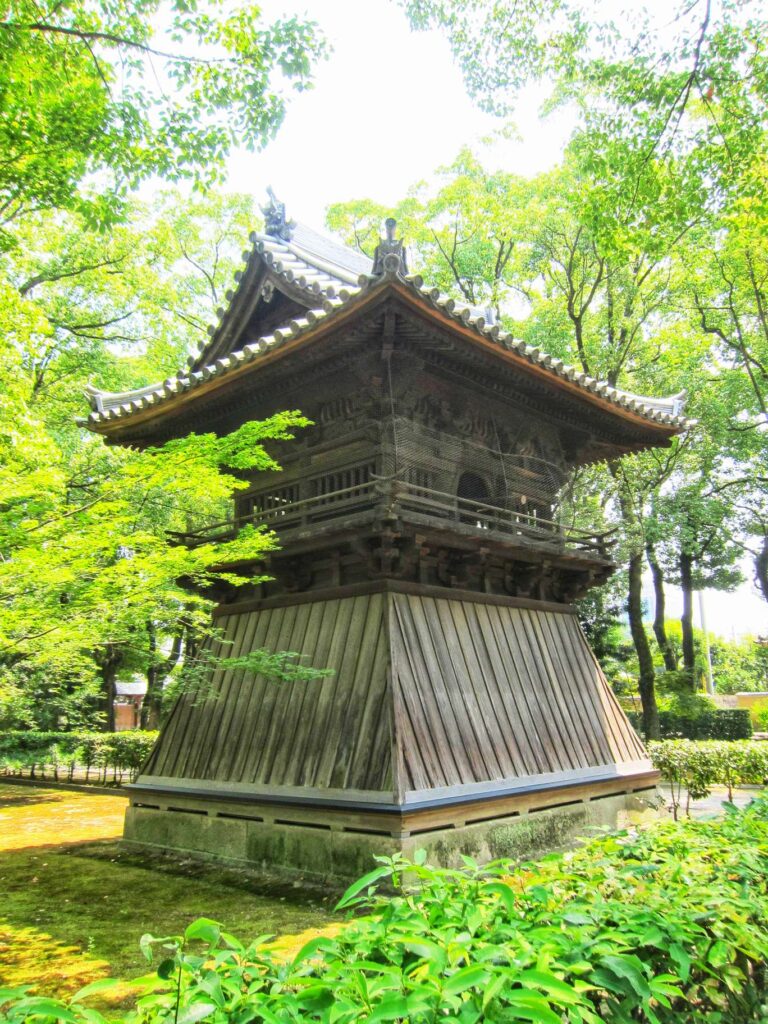
Head Towards the Buddhist Sanctum
Finally, we heads towards Shofukuji’s Buddhist Sanctum (Butsuden/仏殿) right behind the Sanmon. This rustic and traditional hall was originally built in AD 1587; but was later renovated and extended recently in 2012. While the door of the sanctum was locked, one can take a closer peek from the gaps of the door and observe three golden Buddha statues within it.
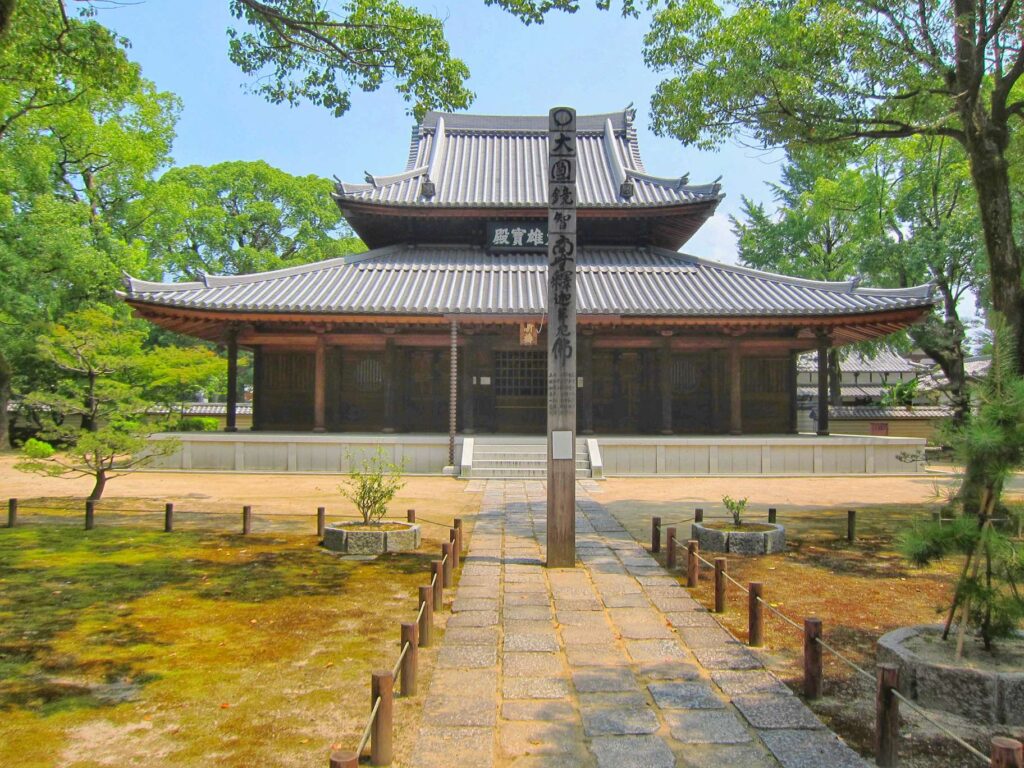
These 3 Buddha statues in fact, represent the past, present and the future. From the left, they are:
- The Buddha of the Past: Amida Nyorai (阿弥陀如来)
- The Buddha of the Present: Shaka Nyorai (釈迦如来)
- The Buddha of the Future: Miroku Bosatsu (弥勒如来)
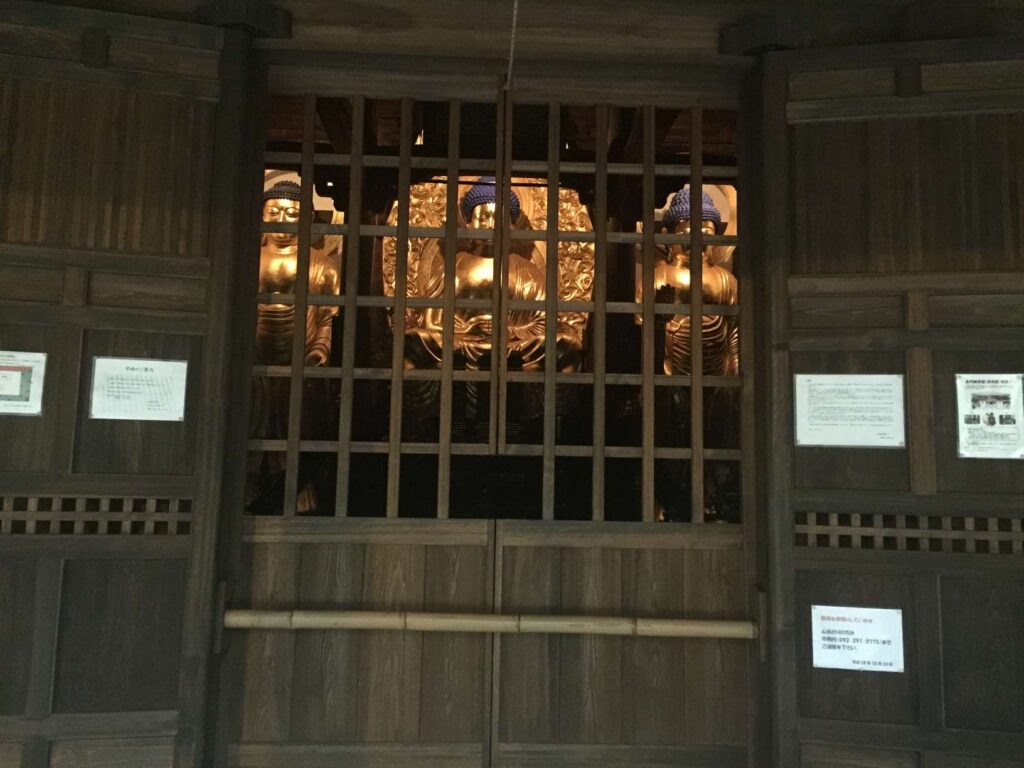
Also, there is a little statue of the Eisai (栄西); as well as a cool wood carving of a dragon soaring in the clouds inside the sanctum. Unfortunately, when I visited, I wasn’t able to see it live given that the door was locked; but one can catch a glimpse here in the temple’s official website.
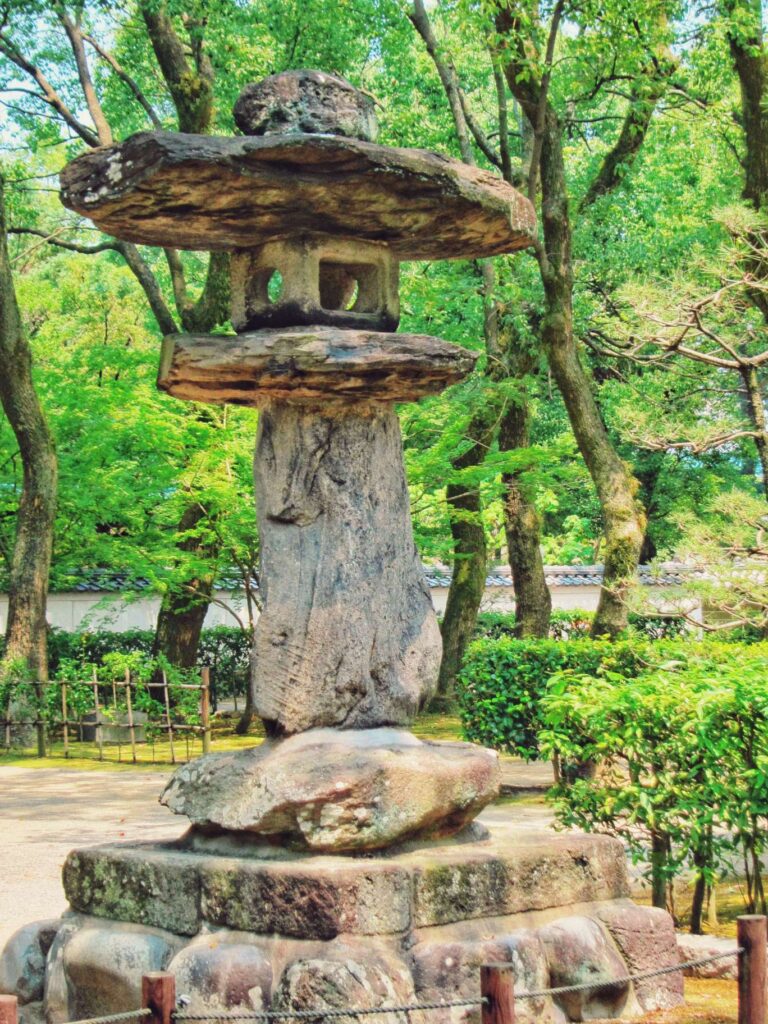
Take your time to explore the complex, as there are abundant of opportunities to take a marvelous photo. It feels like having the entire complex for yourself; accompanied only by the chirping of the birds.
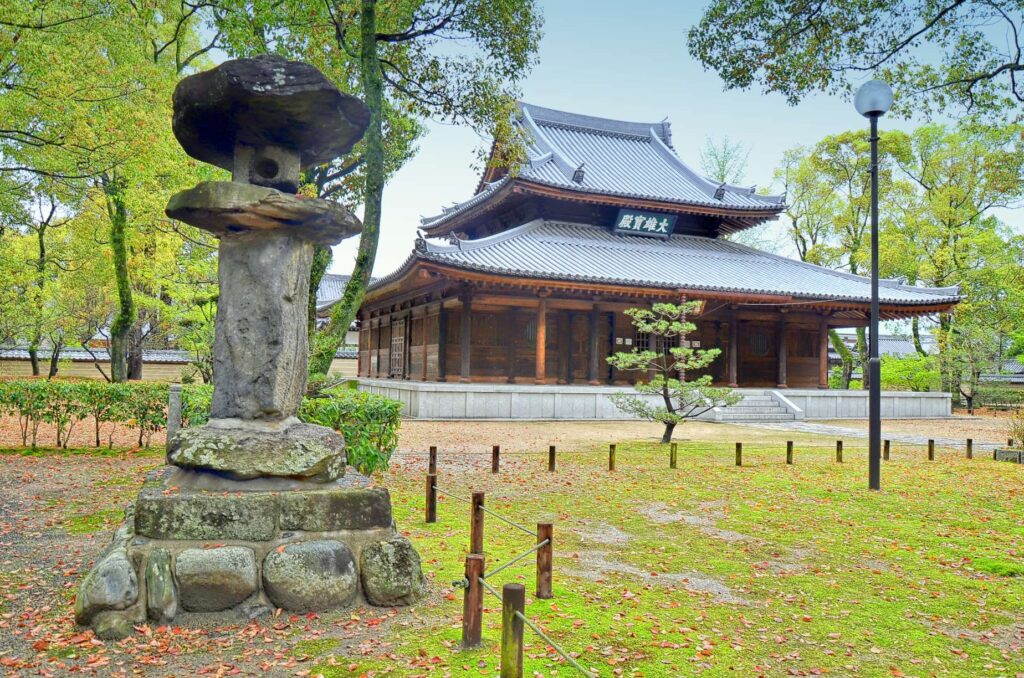
Admire the Architecture of the Main Hall
Behind the Buddhist sanctum lies the temple’s main halls and administration buildings. While entry to the buildings are off-limits unfortunately, the architectures here are equally impressive; especially with those elegant traditional roof tiles.
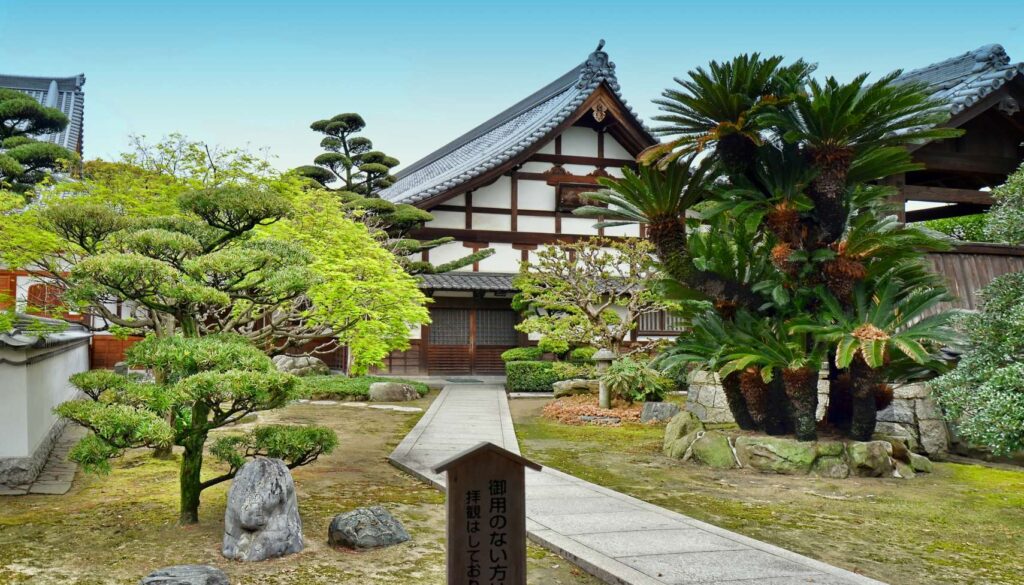
See that gentian leaf (sasarindo/笹竜胆) emblems on the gate below? That is the official emblem for the Minamoto clan (源氏); symbolising the fact that it was Minamoto Yoritomo (源頼朝) who granted the land to Eisai (栄西) for him to construct this temple.
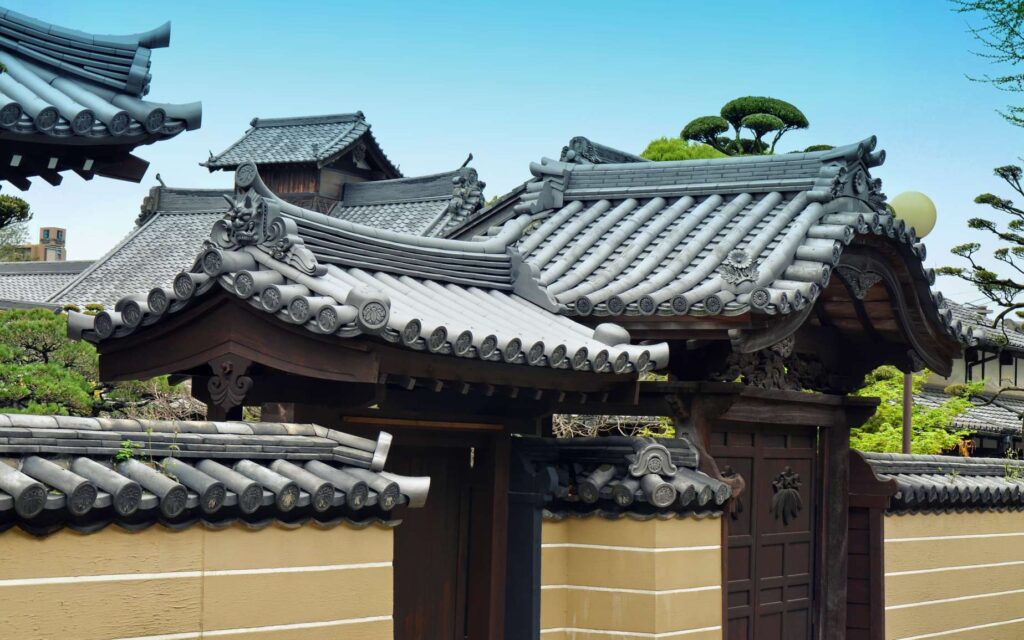
The entrance, the Sanmon gate, the Buddhist sanctum and office buildings are all arrayed in a straight line; where one can walk in a single direction passing these buildings. This layout is called Garan (伽藍) and is a layout commonly utilised among Zen Buddhist temples. This is to represent the focus of Zen Buddhism, that is to seek spiritual stability in one’s life.
Shofukuji - The Hideout for the City's Stray Cats
Did you know that Shofukuji is also a hideout spot for the city’s stray cats? Occasionally, these cute cats will drop by and laze idlily around the complex; especially in the afternoon. They usually hang around the stone bridge, the corners and even sitting on the benches. More impressive is how these cats can sit in absolute stillness even despite being approached by visitors.
It is as if the cats themselves visit the temple in order to escape the bustling city life and practice Zen meditation; all while making themselves at home and guarding the temple grounds. And if you are lucky, you may be able to catch a scene of the cats gathering close to each other while being fed by the locals.
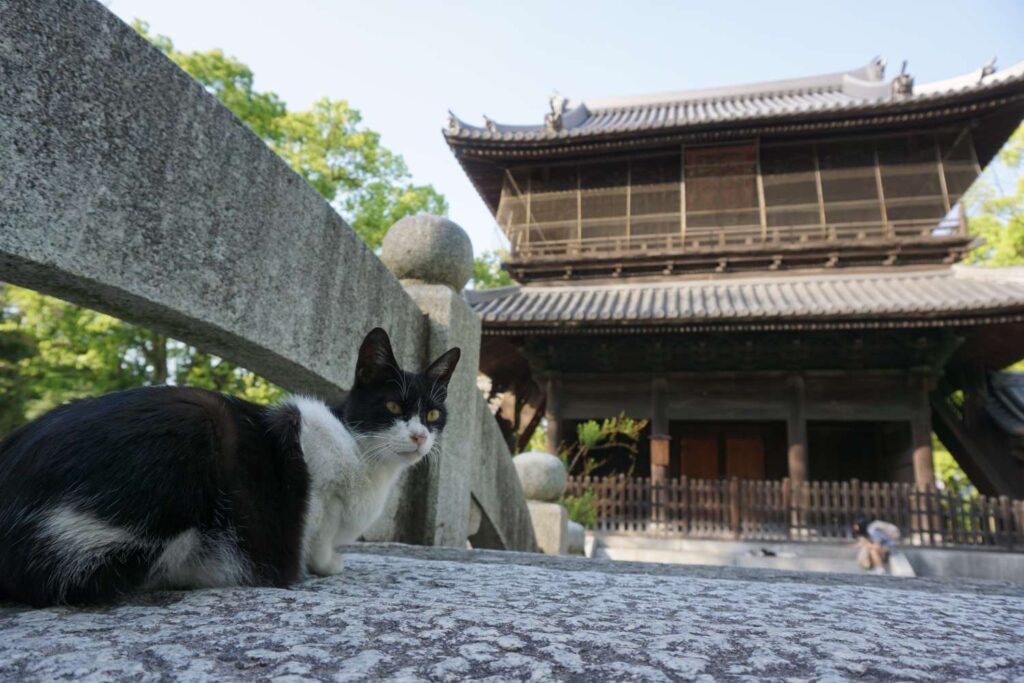
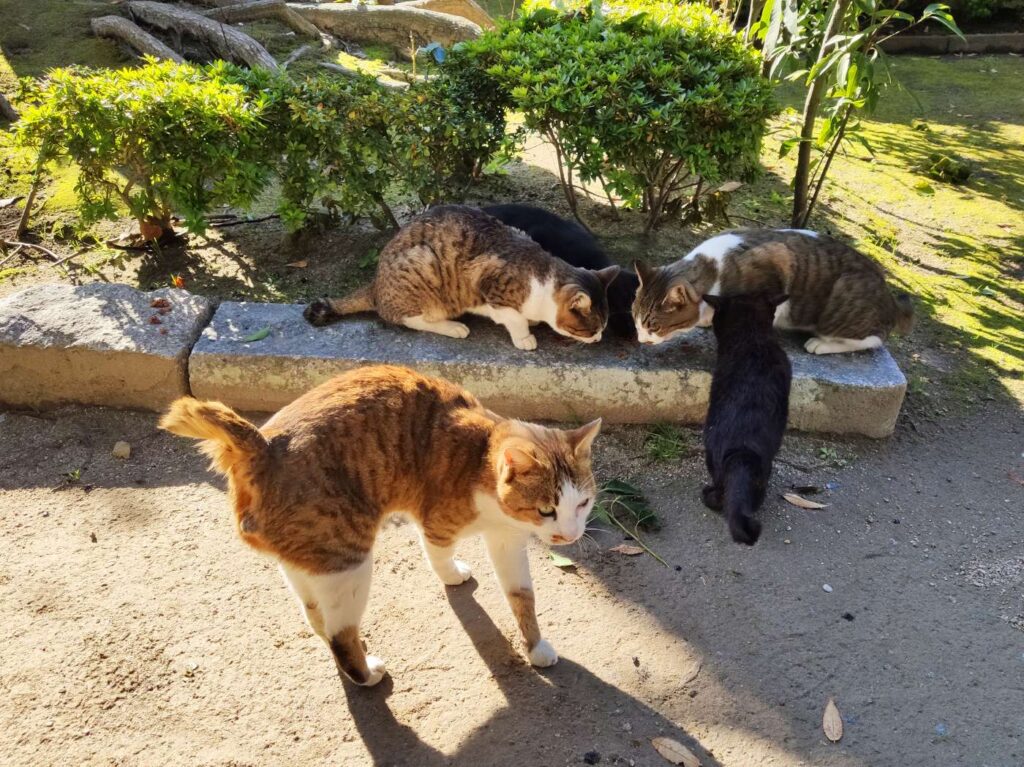
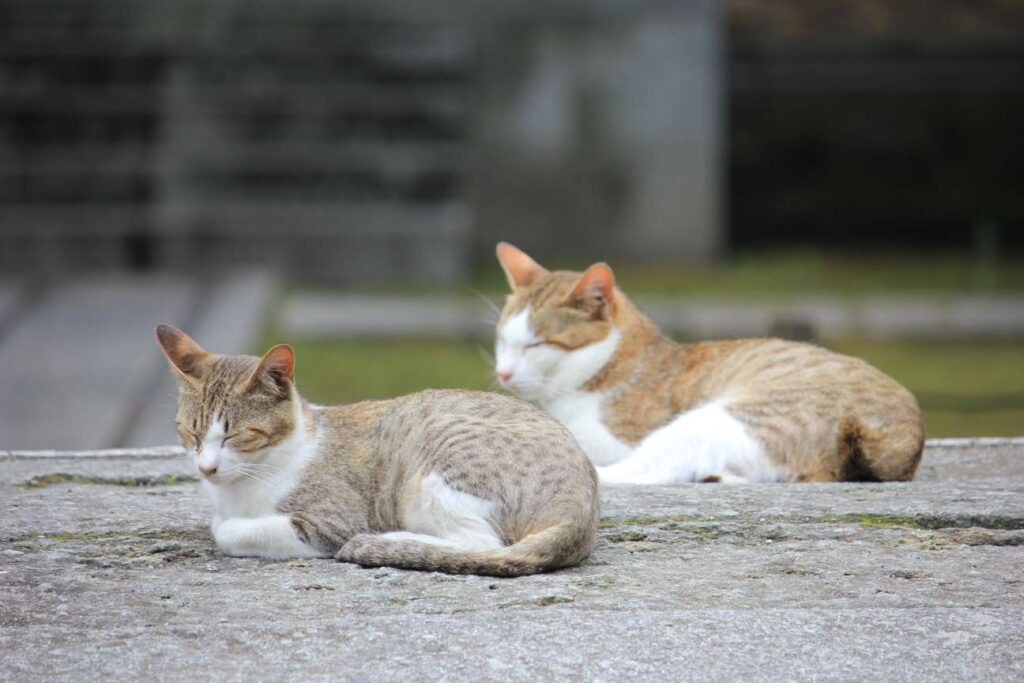
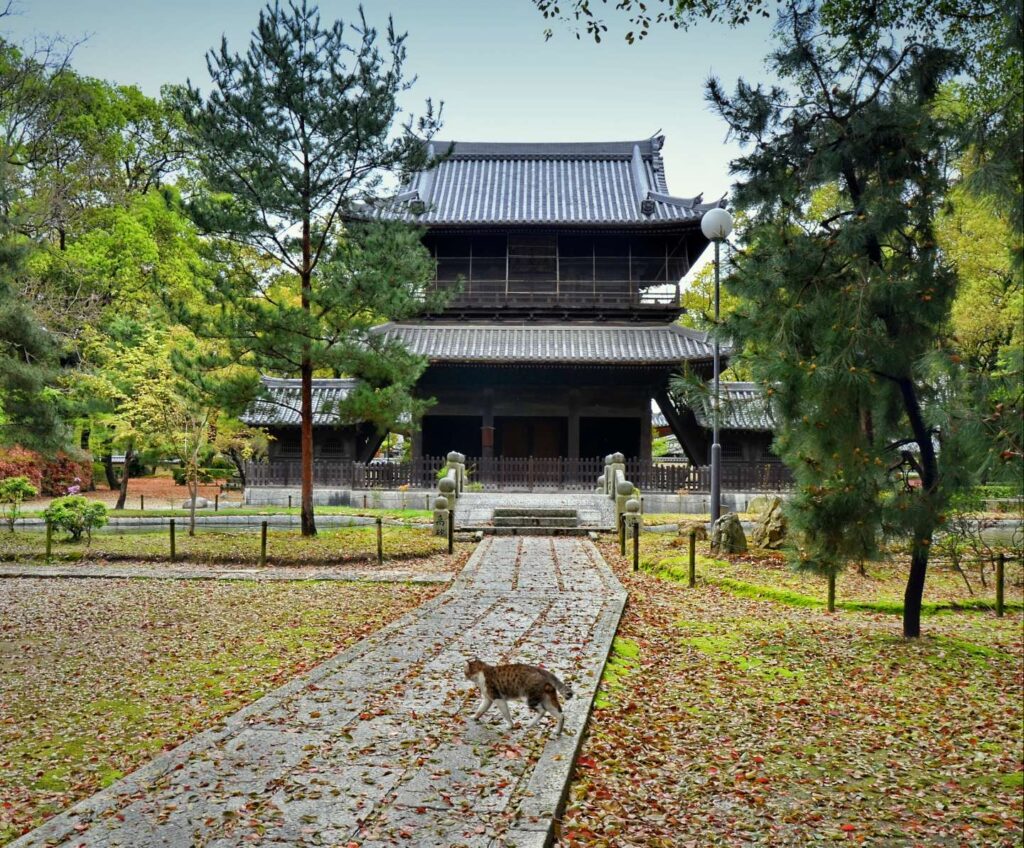
Getting There
By Train
Fukuoka is well-connected through the JR train line; which one can get down at the large Hakata station (博多駅). Afterwards, take the subway (chikatetsu/地下鉄) and disembark at the next station, Gion (祇園駅). Total fee for subway costs 210 Yen. The temple is simply a few minutes walk from the subway station. Alternatively, you can also walk for about 15 minutes to the temple from Hakata station.
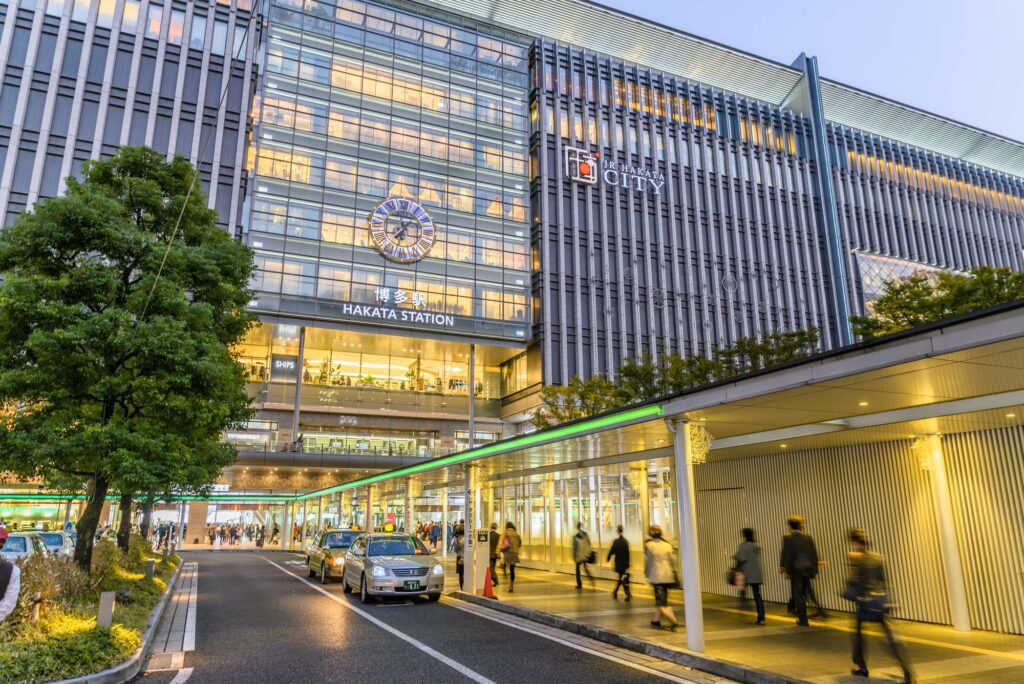
In fact, I would suggest getting the JR Pass (JR パース) especially if you are commuting to Fukuoka from other major cities. The JR Pass is a handy all-you-can-ride pass on all JR lines in the country; which presents a great opportunity to save costs and also breeze through the hectic train stations. In fact, a friend of mine traveled two-way between Osaka and Oita, together with a few other cities; and managed to save 10% of his costs. The JR pass is especially worth considering if you:
- Are traveling between cities and other regions; especially when train fares between regions are quite expensive.
- Love trying out the bullet train/shinkansen (新幹線) experience.
- Travel solo, in a couple or a smaller group.
By Car
Another alternative, especially for those who prefer a more flexible option in travelling. Those driving can simply park at the parking lot right next to the temple’s entrance, with a fee of 300 Yen for 40 minutes. Click here for the location.
Driving is another alternative to travel around Japan; especially if you are travelling with a family or group of friends. In fact, a friend of mine used Tocoo; Japan’s leading rental car website which is reliable and provides a wide selection of cars, ranging from small economical cars to the larger family cars.
Are you unsure of getting the necessary license and familiarising with the rules of driving in Japan? Fret not as they provide comprehensive and elaborate guides in their site on what you need to start your driving journey in Japan. Click here to embark on a wonderful journey of driving through the countryside of Japan.
Overall Thoughts
Despite being in a metropolis, Shofukuji is surprisingly peaceful and enchanting as well. Shofukuji’s small and simplistic Zen layout and garden makes it a wonderful little spot for those seeking to escape the hustle and bustle of the city; while not having to travel far into the outskirts. All the more reason to venture into the Old City section and its attractions, including the nearby historical Tochoji (東長寺) temple. Be sure to subscribe, as I will cover more hidden destinations like this in the future.
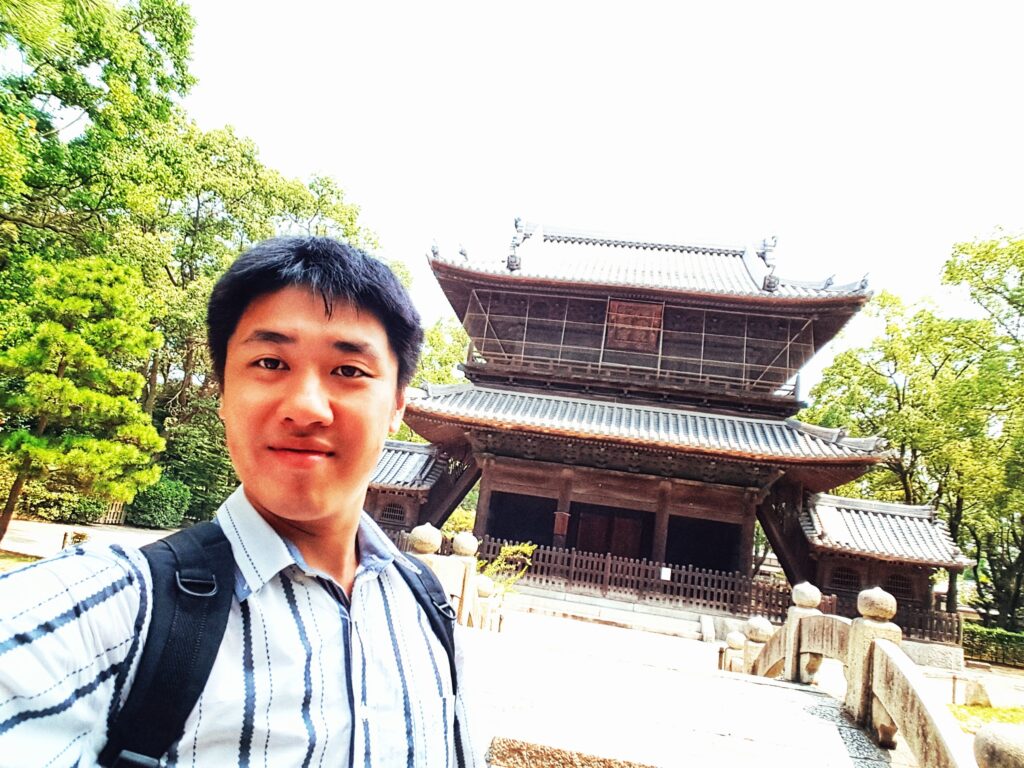
Loving the content here?
Subscribe and get your free hidden gems in Japan bucket list here.


You May Also Like
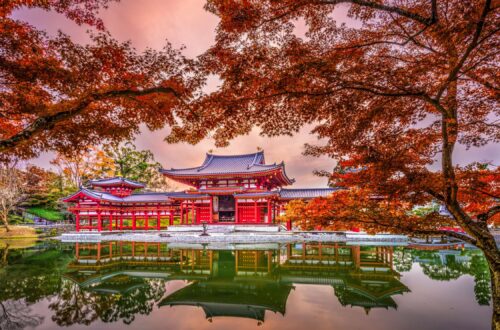
9 Kyoto Day Trip Gems You Can’t Miss: Get The Ultimate List of Panoramic Views
October 19, 2024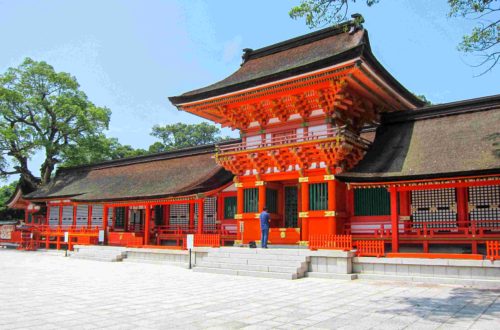
Usa Jingū – A Complete Travel Guide to Japan’s First Hybrid Shrine
May 14, 2021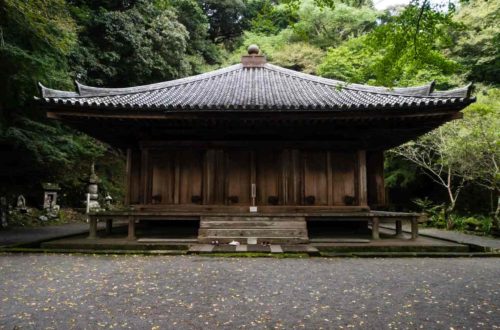

2 Comments
Lester Loschky
Thank you so much for your awesome webpages on Shofukuji temple in Fukuoka! I lived in Fukuoka for two years, and I studied Rinzai Zen meditation with a monk while there. But I never knew about Shofukuji temple until just hearing about it today. Your website has the best coverage of it, particularly in terms of photos, that I could find, besides the temple’s own website. The next time I visit Fukuoka (my wife’s home town), I’ll be sure to visit it!
Yentravelsjapan
Hi Lester, thank you so much for your generous feedback. Glad you enjoyed it and I agree its a beautiful site on its own. Its small, yet its quiet and offers plenty of room to explore. So nice that your wife is based in Fukuoka, and that its a great opportunity to check out this underrated temple.